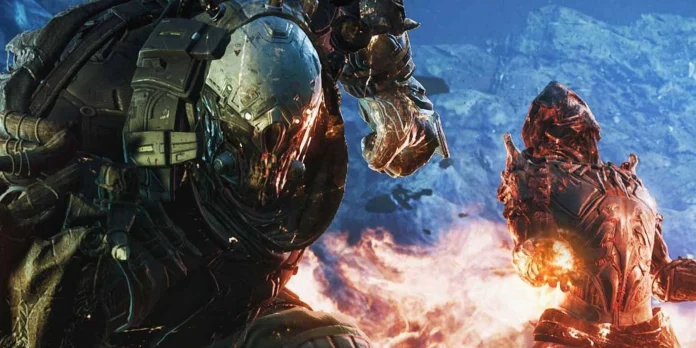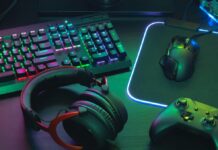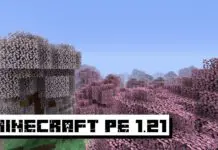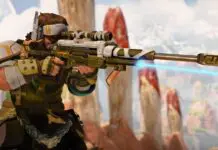Years ago, when I was in art school, I was in a 3D class and we were required to make a simple shader for each object that we made. There were only a couple of options available, and none were easy to create. So I decided to take a stab at creating my own. I spent a ton of time on the technical details, but I was never happy with it. And after I graduated, I didn’t keep it updated and eventually it fell out of use.
Every time I start to get into the world of shaders, I inevitably find myself spending hours and hours searching for the exact shader that I want to use for whatever project I’m working on. This is tedious work that I can guarantee all game developers can relate to.
The graphics and computer graphics community has been filled with hot takes recently, as people have been disagreeing about the best way to make 3d graphics. Some people love the power of HLSL (High Level Shader Language), others passionately hate it. Some people love the flexibility of GLSL (Graphic Library Shader Language), others hate it. The reality is, there’s no correct answer: all of these are just different, slightly different, ways of doing the same thing.
I just squandered a few of hours of my Wednesday to put this together. When I discovered how long it takes to go through all of the shaders, I set out to find a method to make it a LOT quicker. That is, with this sheet.
This tool works by assigning each shader 2 of its most common colors. The most common color (primary) is across the top of the sheet, and secondary color is down the side. Lets say you want a shader that is mostly red with a bit of blue. First, you would find the “red” column, then find the “blue” row and where they intersect. That square contains all the shaders that fit that description. Say, Devil in the Details. Use the second sheet and find the name in the leftmost column. The row tells you where to find the shader in the collections>flair>shaders section. Devil in the Details is in Activities, 1 A 3. In activites, page 1, leftmost column (ABC), row 3rd from the top. Preview it, and see if its what youre looking for. As a side note, any shader with () after it, is a trinary shader, which instead of having a “strong” color and a “weak” color, may have one “strong” color and two “weak” colors. Examples of this include many of the white/grey shaders like iron mossbone, which has a significant amount of gold, rather than just being 95% white and grey. Shaders that are in a c / c cell are solid color shaders. Shaders that are >95% of one color, such as bitterpearl or honors of the nine in the white / white cell.
However, there are a few issues with this. The first is because fate color palettes are far from straightforward. You choose a shader with a red and white symbol, but when you preview it, your chestplate is green, despite the fact that the icon contains no green. As a result, there may be some irregularities with the tool. Bungie’s shaders, I believe, were created by assigning colors to materials rather than generic colors. For instance, all metals should be x, all textiles should be y, and all fabric accents should be z on a character. Color rotations should be varied for each armor piece, such that not every armor has a main color and the primary and secondary colors are exchanged. This would result in a slew of various armors displaying previously unseen colors that emerge at random from the symbol.
So if you test a shader and it has drastically different colors than what you see on the sheet, please let me know so I can go back and fix it. There are several shaders that aren’t on the list if you check at the bottom of the first page. These are shaders I couldn’t place since the color combinations were perplexing (e.g. purple/green/brown) or the colors varied greatly depending on the armor. I’ll eventually go back and put them where they go and update the sheet.
Have fun coloring!
Original source: link
- Why hasn’t a “Destiny-killer” been created?If you’ve attempted to keep track of Destiny over the last six years, you’re undoubtedly wondering how it’s still going strong. “How is it that a franchise that has gone up and down three times is still profitable?” The solution, I believe, may be found in James Cameron’s Avatar. After some consideration, I came up with an idea.
- Never fear a Galleon again, Solo Sloopers.I’ve seen a lot of folks on this sub complaining about getting annihilated by a four-man galleon while they’re playing alone. As a sloop, I’ll explain why you should never be concerned about galleons. I’ll try to be as detailed as possible when describing moves, but I’m assuming…
For the game Destiny 2, write “I developed a tool so you never have to search for a shader again.”
2021’s Top 35 New PC Games
Are you looking for PC games to play? Here are all of the new PC games to keep an eye on in 2024.
20 Best New PS4 Games in 2024
The pace of PlayStation 4 game releases isn’t going to slow down in 2024. Here’s everything to look forward to in the coming months.
I have looked and looked for a great free GLSL shader editor, and I just can’t seem to find one. I’m not talking about a simple one-click-edit shader feature in a game engine, I’m talking about something that will allow you to design a shader program the way you want, without having to go looking around for one. If you’ve ever made a shader and you can look at your code and say “man, that’s a mess” you will know what I’m talking about.. Read more about seus shaders and let us know what you think.
Related Tags
This article broadly covered the following related topics:
- bsl shaders
- sildurs vibrant shaders
- continuum shaders
- seus shaders
- oceano shaders




